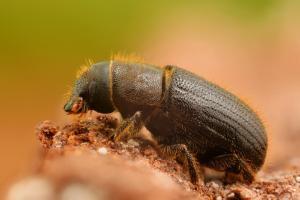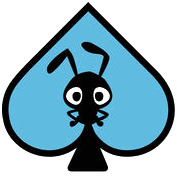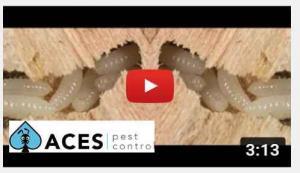BORER
Borer
Borer control Auckland starts with an inspection. Borer is a beetle that can potentially destroy the structure of your building. There are different types of wood eating beetle including the longihorn beetle and long toothed borer, but the furniture borer beetle is the most common. Borer beetles are on the wing typically in January through to March.
Wood boring beetles most often attack dying or dead trees. In forest settings, they are important in the turnover of trees by culling weak trees, thus allowing new growth to occur. They are also important as primary decomposers of trees within forest systems, allowing for the recycling of nutrients locked away in the relatively decay-resilient woody material of trees. To develop and reach maturity woodboring beetles need nutrients provided by fungi from outside of the inhabited wood. These nutrients are not only assimilated into the beetles' bodies but also are concentrated in their frass, contributing to soil nutrients cycles. Though the vast majority of woodboring beetles are ecologically important and economically benign, some species can become economic pests by attacking relatively healthy trees (e.g. longhorn beetle, borer) or by infesting downed trees in lumber yards. Species such as the longhorn beetle and the borer are examples of invasive species that threaten natural forest ecosystems.
Invasion and control
Woodboring beetles are commonly detected a few years after new construction. The lumber supply may have contained wood infected with beetle eggs or larvae, and since beetle life cycles can be one or more years, several years may pass before the presence of beetles becomes noticeable. In many cases, the beetles will be of a type that only attacks living wood, and thus incapable of "infesting" any other pieces of wood, or doing any further damage.
Genuine infestations are far more likely in areas with high humidity, such as poorly ventilated crawl spaces. Housing with central heating/air-conditioning tends to cut the humidity of wood in the living areas to less than half of natural humidity, thus strongly reducing the likelihood of an infestation. Some species will infest furniture.
Some beetles invade wood used in construction and furniture making; others limit their activity to forests or roots of living trees. The following lists some of those beetles that are house pests.

WHAT IS BORER
Borer is a beetle which belongs to the order Coleoptera. Coleopterans are the most common type of insect in the world, with the highest numbers in terms of mass and species.
This fact combined with the observation we don't really see a lot of beetles, is said to mean they are in areas we can't see. Examples of this would be beetles inside trees, foliage, detritus and food.
Yes food!
They think there are so many small beetles in the raw materials for food e.g. flour that they get incorporated into our food without us actually knowing. A little extra protein never hurt anyone!
We have completed a Post Graduate Qualification in Timber Pest Management with Protrain in 2019.
HOW DO I KNOW MY BORER IS ACTIVE?
You need to look for the Borer holes. When borer larvae is active frass comes out of their holes. Frass has a distinct colour of yellow/orange.
Look for
- small piles of frass
- frass coming out and down from borer holes
- frass covering your possessions in the affected area
- in extreme cases damage to structure of the wood.
BORER TREATMENTS IS MY BUILDING/HOUSE SUITABLE FOR A TREATMENT?
We provide treatments for naked wood in sub floor areas and ceiling spaces.
before a treatment you will need to do the following,
- Insulation removed, by an insulation company.
- Naked wood. The wood to treated needs to be free of paint and varnish
- Access. A technician needs to be able to get access to the areas to be treated.
BORER TREATMENT
The treatment we use kills the wood eating larvae. It takes up to nine months to have an effect on the borer.
We use Sodium Borate to stop the larvae from eating the wood in your house. Sodium Borate is applied to the bare or naked wood. The aim is of the treatment is to soak the solution 5mm into the exposed wood. This achieved by applying 2-3 copious applications with one hour between applications.
When exiting the wood, the Borer maggot will then chew through 5mm of Sodium Borate infused wood. Then on re-entering the wood the maggot will consume another 5mm of Sodium Borate impregnated wood, which is the lethal dose killing the maggot.
Once the wood in your house has been treated for Borer, the treatment remains there indefinitely protecting your house against wood eating insects.
The treatments take between one and two days. The main reason for long time of the treatment is the multiple coats and the rest period in between them.
ACES pest control has specialist gear for applying Sodium Borate. This includes a 100 litre tank which is powered by a battery. We also have 50 metres of piping to reach inside even the largest house. This provides a constant and even flow of Sodium Borate solution. A strong motor and battery allows the solution to be pumped three stories high if needed.
Sodium Borate is low toxicity for humans and their pets. And the treatment is locked into the wood.
Get in touch with ACES pest control Borer treatments
Video for FAQs on Borer
FAQS BORER
BORER frequently asked questions
Q: BORER: WHAT PREPARATION IS REQUIRED FOR A BORER TREATMENT?
A: All insulation needs to be removed. All timber needs to be bare (free of paint and varnish). Under the house needs to clear for access to do the treatment. Please clear up hazards e.g. broken glass from under the house.
Q: BORER: HOW LONG DOES A TYPICAL BORER JOB TAKE?
A: Depending on the size of the house and areas treated 1-2 days
Q: BORER: I HAVE SOME FURNITURE WITH BORER HOLES IN IT. CAN YOU TREAT THIS?
A: Sorry we don't offer a service for the treatment of Borer in furniture.
 CLIENT TESTIMONIAL
CLIENT TESTIMONIAL
"As a Barfoot and Thompson Property Assistant, I've used Aces on multiple occasions, every time providing work of a fantastic standard. Aces are very knowledgeable, always give an honest opinion and reasonably priced. I completely recommended Aces and their services."
- Thomas, Barfoot and Thompson





